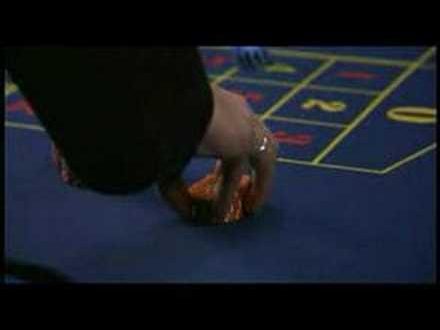(Warning: This card employs mixed and exploding metaphor technology. Be prepared for an amalgam of casino and metallurgical metaphors.)
Croupier is a brilliant contemporary film noir with an anti-heroic protagonist who is a croupier, of course, and quite cynical about the ways of the world and human nature. The one virtue I remember him having, though, is a shrewd card player’s sense of when to hold them and when to fold them. What has stayed with me from that movie is the one line of truly soulful wisdom that the croupier states as his life philosophy:
“Hold on tightly, let go lightly.”
Life requires skills of both detachment and engagement.
Switching metaphors from the casino to the blacksmith’s forge — one must strike while the iron is hot, and a well-lived life provides molten metal glowing in the forge each day.
Every day you are provided molten metal that you need to engage with and shape with your will, creativity, inspiration, perseverance, and whatever else you’ve got.
But molten metal does not stay molten in your forge. If you don’t work it when it’s molten, it can harden into a messy, unfinished form. And if you do give it shape, it still needs to cool and harden into the particularities you’ve actualized, which need to be brought from your forge for use in the world.
For example, I first created this card a dozen years ago. But right now, as I revise it, I’ve put the card back in the forge, and the words are molten again as I add, subtract and alter their form. As soon as I’m done, I remove the card from the forge and republish it in the Zap Oracle, where others, such as yourself, draw it outside of my will or awareness. As I rework the card, I hold onto it tightly, but as soon as I’m done, I let go lightly. By letting go of it, I’m ready to give shape to the next molten object in my day forge.
In relating to others, we sometimes need to hold on tightly but must also be ready to let go lightly. For example, there is only a difference of one letter between “mother” and “smother.”
For a time, a connection opens between you and another person, and your relationship with them becomes a third entity—a molten alloy glowing with heat and light in a forge shared between two blacksmiths. But the composition of the alloy and many of its metallurgical properties are unknown to you and the other. Every relationship between two people is a unique alloy that has never existed before in the history of the universe.
Some of these relational alloys come into being through highly collectivized, mechanized processes, while a smaller number are conjoined through more mysterious and individualized forms of manifestation.
The alloy formed between you and another may contain both industrial toxins and magical elements. Alloys may be both radioactively dangerous and divinely radiant and beautiful. Relational alloys are not merely objects but mercurial subjects. An alloy of soulmates can be life-affirming in some phases and produce tragic magic in others.
The molten alloy of a relationship is a third subject with its own will and life cycle. At a given moment, it may be shaped more by one person or the other. One person may seem to strike the first hammer blow or the last, but neither fully controls the process.
The alloy of two people partakes in all the mysteries of the universe so that no one can comprehend it perfectly.
Of course, the world is full of ignorant and stubborn blacksmiths who think they can shape unknown alloys with the hammer blows of their will. Hardening into shape on the forge of such blacksmiths are misshapen, brittle objects. Sometimes, their hammering just leaves a pool of molten metal that drips off the anvil and into the cracks of doom.
When working with a relational alloy, you must realize your incomplete knowledge of its mercurial nature which partakes of both chemistry and alchemy. Individual psyches involve unknown dynamisms, and when two psyches form a relationship, the dynamism and unknowability multiply.
The motlen alloy within the forge is subject to the shaping influence of at least two blacksmiths, and your efforts may sometimes harmonize and sometimes work at cross purposes. Neither blacksmith is in full control of how long the metal will remain molten and what shapes will be formed.
Recognizing an intrinsic ambiguity, you should nevertheless engage the molten metal with everything worthwhile you’ve got. You hold on tightly but recognize that it is a shape-shifting alloy, so your grasp is not white-knuckled. When the alloy needs to leave the forge, you are wise to let go lightly.
As it is with relationships, so it is with many of life’s aspects and endeavors. For example, if you are the most gifted Olympic swimmer, the metal may be in its most molten state between 18 and 28. At 38, you might hammer away at the moltenness, but you will never make an edge as sharp as what you were able to forge between 18 and 28.
When a relationship, an ability, an endeavor, a whomever or whatever, loses its moltenness, let go lightly. You need to be fully engaged with whatever moltenness is in your forge right now.
There is one molten subject that is always in your forge — you. You are also an alloy of industrial and magical processes with properties you know, properties you don’t know, or properties that are yet to be fully determined. Every day, you must shape and reshape this central molten subject.
Your forge never lacks molten material that needs work. Besides you, there are other molten objects and subjects in your forge today. Don’t neglect them, but don’t overwork them either.
Hold on tightly, let go lightly.
Having trouble knowing when to fold them? There is a known irrational tendency in human beings that motivates them to resist losses more than to pursue gains. This tendency is called loss aversion. Loss aversion can keep someone in the casino trying to recoup losses until their life savings are gone. It may also have been responsible for the worst aviation disaster in history. See another Zap Oracle card, Blindspots, for more on loss aversion and other blindspots.
 ZapOracle.com home to the free 720-card Zap Oracle
ZapOracle.com home to the free 720-card Zap Oracle






